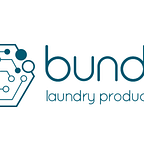The importance of hospital laundry management in ensuring cleanliness, efficiency, and compliance in Australia
According to a recent study conducted by the Australian Institute of Health and Welfare, healthcare-associated infections (HAIs) cost the Australian healthcare system an estimated $1 billion annually. This staggering figure underscores the critical importance of effective hospital laundry management in mitigating the spread of infections and protecting vulnerable patients. While laundry management in hospitals plays a vital role in safeguarding public health and ensuring that Australian healthcare facilities can help the most vulnerable people, it is often overlooked as it works behind the scenes.
In this blog post, we will shed some light on the key aspects of laundry management in hospitals, highlighting the importance of linen classification, facility design, regulatory compliance, and sustainability.
Laundry management improves linen classification and handling
In hospital laundry management, treating linen with care is crucial for patient and staff safety and well-being. The Australian Guidelines for the Prevention and Control of Infection in Healthcare provide clear instructions for categorising healthcare linens based on contamination risk. High-risk items, such as those contaminated with blood or bodily fluids, require a more rigorous cleaning than low-risk items like general linens. Proper segregation and handling of soiled and clean linens are essential to prevent cross-contamination and maintain a safe environment. A single lapse in this process could jeopardise a patient’s recovery and damage the hospital’s reputation.
The key to effective linen classification and handling involves several steps:
- Segregation at the point of use: Healthcare workers must separate soiled linens immediately at the point of use to ensure proper handling from the start.
- Clear labelling and separate bins: Using clear labelling and separate bins for different levels of contamination helps in organising and managing soiled linens effectively.
- Transport in closed containers: Transporting soiled linens in closed containers is essential to prevent the spread of contaminants during transit.
- Separate storage: Storing soiled linens separately from clean linens is crucial to avoid cross-contamination and maintain hygiene standards.
- Dedicated storage areas: Having dedicated areas for storing soiled and clean linens helps in keeping the handling process organised and reduces the risk of cross-contamination.
- Ongoing staff training: Continuous training for staff on proper linen handling and infection control protocols is vital to ensure compliance and effectiveness.
- Regular audits and feedback: Conducting regular audits and providing feedback ensures that guidelines are being followed and allows for improvements in the handling process.
Designing efficient laundry facilities to improve operations
Designing a hospital laundry facility is a complex task that requires balancing space requirements, workflow optimisation, and equipment selection based on the volume and type of linens. Choosing energy-efficient, water-conscious, and chemical-minimising equipment is crucial for sustainable and cost-effective operations.
A well-designed laundry facility can significantly improve efficiency and reduce operating costs. The layout of the facility should facilitate a smooth workflow from receiving soiled linens to delivering clean ones. This includes clearly defined zones for sorting, washing, drying, and folding. Investing in high-quality, energy-efficient machines can reduce water and energy consumption. Automated systems for sorting and washing can improve efficiency and reduce human error. Maximising the use of available space is essential. Vertical storage solutions and compact machines can help make the most of limited space.
Hospital laundry management is essential for staying compliant
Compliance with healthcare standards and regulations is critical. The Australian Guidelines for the Prevention and Control of Infection in Healthcare and the Australian Standard for Laundry Practice guide healthcare providers towards best practices in infection control and environmental stewardship. Adhering to these guidelines is crucial for successful accreditation audits and surveys. Non-compliance can result in hefty fines and damage to a hospital’s reputation. Ensuring adherence to these standards is essential to avoid negative publicity and maintain high standards of hygiene.
Steps to ensure regulatory compliance include conducting regular internal and external audits to assess compliance with guidelines, maintaining detailed records of linen handling, washing processes, and equipment maintenance, and providing ongoing education and training on regulatory requirements and best practices.
Embracing sustainable practices for a better future
As the world becomes more environmentally conscious, hospital laundry management plays a crucial role in sustainability. Implementing eco-friendly practices, such as reducing energy consumption, water usage, and chemical waste, can significantly impact the planet. This benefits the environment and contributes to the long-term viability of healthcare institutions. Operating sustainably ensures hospitals can continue to provide care in a world facing environmental challenges.
Sustainable practices in hospital laundry management include using water-efficient washing machines and recycling water where possible, investing in energy-efficient equipment, optimising the use of heating and drying systems, and using environmentally friendly detergents and reducing the use of harmful chemicals.
Embrace hospital laundry management for a cleaner, efficient, and hygienic healthcare facility
Laundry management in hospitals is an unsung hero of the Australian healthcare system. Its importance cannot be overstated, as it plays a crucial role in ensuring the well-being of patients, staff, and visitors. Healthcare facilities can create a safe and healing environment while optimising their laundry operations by adhering to industry standards, implementing advanced technologies, and prioritising sustainability.
As the Australian healthcare system evolves, effective laundry management will only grow, making it important for healthcare providers across the country to invest in a modern and capable laundry management system to accommodate growing laundry management needs.
